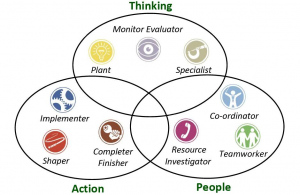 In a recent blog I described how we use behavioral questions to ‘Follow the Star in Search for a Star’ to hire high performing individuals. In this blog I address the difficulty of merging these star performers into a cohesive and high performing team. Team building is much more than jumping from platforms into the arms of your teammates or paintballing in a forest! While this may develop an element of trust in the team, it is only one small part of team building.
In a recent blog I described how we use behavioral questions to ‘Follow the Star in Search for a Star’ to hire high performing individuals. In this blog I address the difficulty of merging these star performers into a cohesive and high performing team. Team building is much more than jumping from platforms into the arms of your teammates or paintballing in a forest! While this may develop an element of trust in the team, it is only one small part of team building.
Establishing a new team from the bottom up is difficult; however, this is a rare occurrence. It is more likely you will be asked to lead a group of individuals that already work together. Your job is similar to a gardener, you cut back some areas, remove dead parts and you prune back others to promote growth. Sometimes you need to cut deep to remove individuals in order for the team to be stronger in the future.
I have been part of high performing teams and had my fair share of being part of dysfunctional teams where we never gelled properly and the team results were poor.
Getting everyone working together with a single purpose is difficult. Although teams include a group of individuals, it is a challenge to get the individuals to work as a team. Each individual needs to use his or her skills to make a positive contribution to the success of the team and feel valued. The team is much more than the sum of the individual contributors. If one member of the team is not performing or is not working well with their peers then the whole team suffers. When the right people are in the right roles completing the right task then the team can overcome any challenge. High performing individuals when all placed in one team can sometimes fail because of their lack of ability and awareness of working together.
Teams can fail due to a number of issues; a problem external to the team, individual team members do not perform, the team leader lacks clear leadership skills, poor behavior from one individual or unhealthy internal conflicts may arise and make the team ineffective.
What makes a perfect team? If we forget the external factors and any personal behavioral problems, let us start by focusing on the foundational requirements of the individual team members. Whether you are a team member or a team leader, you can benefit by reviewing the individuals within your team and assessing them using the Belbin Team Types model. Belbin provides a good overview of the individual roles required. I have included a summary here to enable you to see which role you favor. You can also identify the roles in others. The model will also give you a clear language to compare your individual team members and help you to work with them more effectively.
Belbin’s nine Team Roles can be categorized into three groups: Thinking orientated, Action orientated and those that are more People oriented. You need to have all roles covered to form an ideal team however as teams become smaller one person may need to have strengths in multiple roles. Here is a brief overview of the model.
- Plant – Creative, generates ideas and solves problems.
- Monitor Evaluator – Sees all options, evaluates.
- Specialist – Provides knowledge and skills.
- Implementer – Turns ideas into actions, efficient and reliable.
- Shaper – Has drive and courage to overcome obstacles.
- Completer Finisher – Searches out errors, perfects and completes tasks.
- Co-ordinator – Clarifies goals, delegates, identifies talent.
- Resource Investigator – Communicates, develops contacts, high Emotional Intelligence.
- Team worker – Cooperates, perceptive, listens and averts conflict
Teams should be well balanced, with a mix of all these skills. The model will also help you relate to your other team members and also help you communicate and engage with them in day to day work settings. Individual self-assessments are available from Belbin.com. After I contacted Belbin, they kindly agreed to provide a 25% discount to the first 50 readers of this blog by using the discount code Belbin25. The code will only be valid until the end of February 2015. The completed self-assessment also includes a link to a video containing two interviews. The first interview demonstrates the strengths of your key role and the second shows potential watch out areas. I found the video very useful. You could also purchase the book ‘Management Teams’ by Meredith Belbin where you will find a code included for a free report.
If you are forming a new team, joining an existing team or your current team is in trouble then this is money well invested!
Successful team building!
Stuart
Making Steps and Leaving Footprints…
